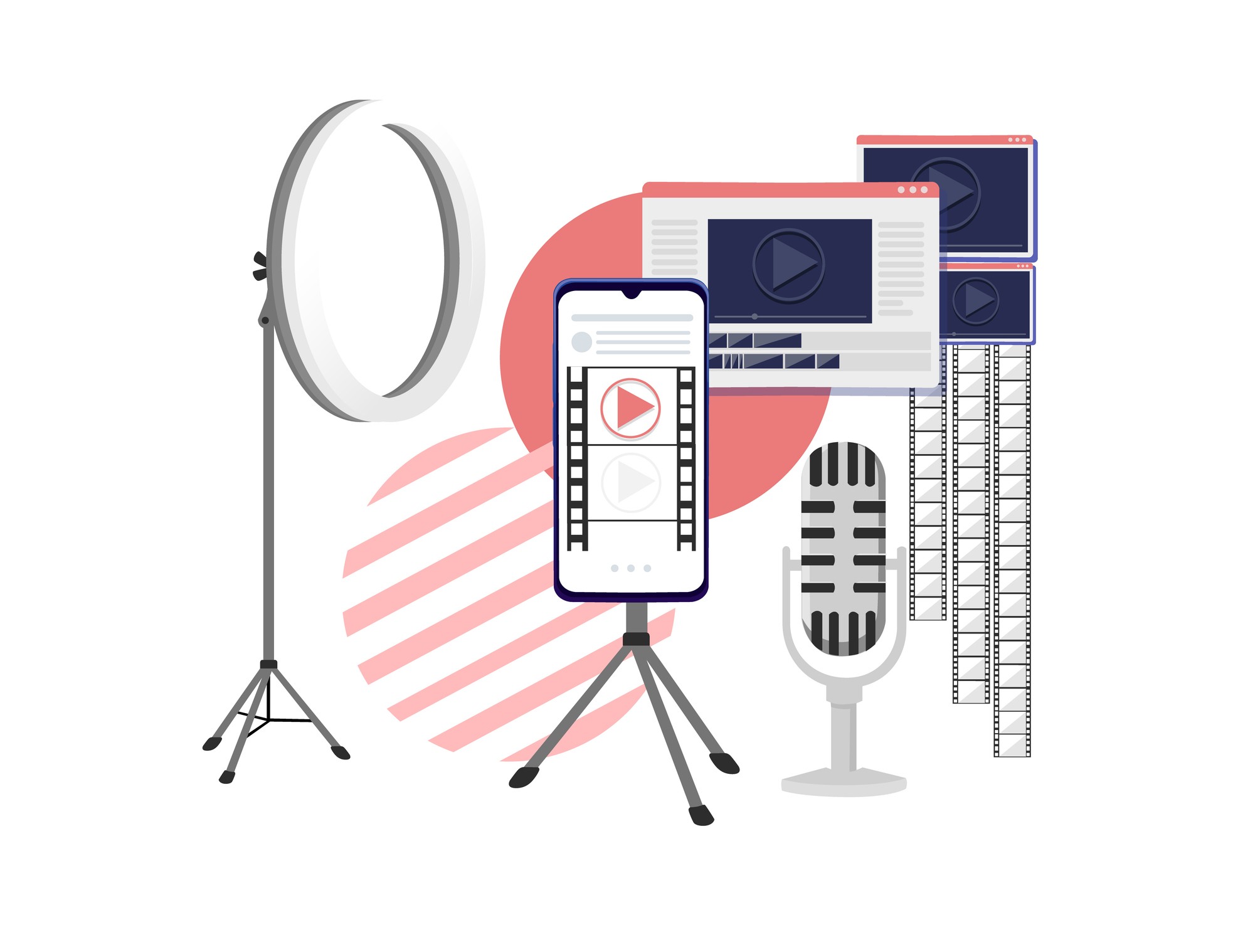Building a brand online can feel overwhelming, especially when every platform, trend, and algorithm seems to change weekly. For small businesses and solo brand-builders, staying visible without spending all day on content creation can be a real challenge.
The good news? You don’t need to be everywhere or post constantly to grow your presence. With the right social media strategies, you can focus your time and energy on what actually works and skip the noise.
How Social Media Helps Build Long-Term Brand Visibility
Despite constant changes to algorithms and rising ad costs, social media remains one of the most effective tools for building a brand online. It’s still where people go to discover new businesses, check out what others are saying, and decide who they trust.
Whether you're a small business or building a personal brand, showing up regularly helps keep you top of mind. Most customers won’t buy the first time they see you, it’s the small, repeated touches over time that build familiarity and trust.
It’s true that organic reach isn’t what it used to be, but that doesn’t mean it’s useless. With the right approach, focusing on value-driven content, consistency, and engaging formats, even a modest following can lead to meaningful results. The key is to work smarter, not louder.
Choosing the Right Platforms for Your Brand
One of the most common mistakes small businesses make is trying to show up on every social platform at once. The result? Burnout, scattered messaging, and inconsistent posting.
Instead, focus on where your audience actually spends time. Think about:
- Demographics: Age, gender, location, and interests of your typical customer.
- Content format: Do they prefer quick videos, long posts, tutorials, or images?
- Engagement style: Are they chatty, visual, analytical, or passive scrollers?
Choosing the right platforms helps you create content with intention, not just to check a box. Here’s a quick look at where each platform fits, not every one will be right for your brand, and that’s okay.
Instagram remains one of the top platforms for brand-building, especially for visual storytelling and lifestyle content. Its mix of Reels, Stories, and posts gives businesses flexible ways to connect and convert.
- Best for: B2C, lifestyle brands, wellness, beauty, food, retail, solo brands
- Demographics: Primarily ages 18–44; slightly more female users
- Content Format: Reels, carousels, Stories, image posts
- Engagement Style: Visual-first, quick likes, light conversation via comments and DMs
- What to Post: Product showcases, behind-the-scenes, user-generated content, short-form videos
Although younger audiences have shifted away, Facebook is still strong for local visibility, events, and building relationships with community-minded or older users.
- Best for: Service-based businesses, local businesses, community-focused brands
- Demographics: Ages 25–65+; balanced gender use, strong in suburban and rural areas
- Content Format: Posts, events, Groups, long-form updates
- Engagement Style: Occasional engagement, group discussion, shares
- What to Post: Promotions, events, local updates, community posts, reviews
LinkedIn is the go-to platform for B2B marketing, thought leadership, and professional networking. It’s ideal for building trust and credibility in industries where expertise matters.
- Best for: B2B, consultants, professional services, SaaS, agencies
- Demographics: Ages 25–54; professionals, slightly male-skewed
- Content Format: Text insights, videos, articles, team updates
- Engagement Style: Professional, value-driven conversation, low-volume high-quality interaction
- What to Post: Industry tips, client wins, team intros, thought leadership
TikTok / YouTube Shorts
Short-form video continues to dominate. Both platforms thrive on authenticity, humour, and fast-paced content ideal for discovery and tapping into trends.
- Best for: Content Creators, retail brands, service-based brands with personality
- Demographics: Ages 16–34; urban and mobile-first users
- Content Format: Short vertical videos under 60 seconds
- Engagement Style: Quick views, shares, trend-focused interactions
- What to Post: Tips, tutorials, trends, packaging, day-in-the-life
X (formerly Twitter)
X still plays a role for thought leaders and brands that want to stay part of the public conversation. Best suited for real-time updates and industries that value commentary.
- Best for: Tech, news, media, B2B thought leadership
- Demographics: Ages 18–49; historically male-skewed
- Content Format: Short posts, threads, links, polls
- Engagement Style: Real-time discussion, quick replies, niche communities
- What to Post: Opinions, curated links, industry news, brand voice
Pinterest functions more like a visual search engine than a traditional social platform. It’s strong for long-term traffic and inspiration-based product discovery.
- Best for: E-commerce, DIY, wellness, design, fashion, food
- Demographics: Women 25–44; home and lifestyle-focused
- Content Format: Pins, infographics, step-by-step guides
- Engagement Style: Quiet discovery, saves > comments
- What to Post: Evergreen tips, product roundups, how-tos, seasonal content
Google Business Profile
This is less about social engagement and more about local search visibility. Keeping it active supports your presence on Google Maps and in local results.
- Best for: Local service providers, small shops, in-person businesses
- Demographics: All local customers searching with intent
- Content Format: Business updates, photos, posts, reviews
- Engagement Style:Mostly clicks, calls, and directions
- What to Post: Offers, hours, service info, reviews, Q&As
Bluesky
Bluesky is still in early growth, mainly attracting tech-savvy users and people exploring decentralized platforms. It's not essential for most small businesses ... yet.
- Best for: Tech-forward brands, personal brands, open web enthusiasts
- Demographics: Early adopters; younger to middle-aged professionals
- Content Format: Text-based posts, links, light image support
- Engagement Style: Niche conversations, community-driven threads
- What to Post: Brand voice, tech commentary, niche updates
Social Media Strategies That Work Without Burning Out
You don’t need to post daily or go viral to see real growth. The key to lasting success on social media is building a routine that’s sustainable, something you can keep up without it taking over your day.
Start With Clear Goals
Before you create any content, define what you want to achieve. Social media can support different parts of your business, but it’s important to focus your efforts:
Brand Awareness
This is about making sure your ideal audience knows you exist and remembers you. The goal isn’t just to show up in feeds, but to consistently represent your brand’s personality, values, and voice. Strong brand awareness helps you stay top of mind so that when someone needs what you offer, they think of you first.
- What to focus on: visual consistency, storytelling, shareable content, and building recognition over time.
Engagement
Engagement goes beyond views and impressions, it’s about sparking interaction. Every like, comment, DM, or share is a signal that your content is connecting. A business with a smaller but more engaged audience will often see better results than one with a large but passive following.
- What to focus on: asking questions, responding to comments, using interactive tools like polls or quizzes, and sharing relatable content that invites conversation.
Leads or Website Traffic
If you’re trying to turn followers into customers, your content should help guide people to take action, whether that’s visiting your site, joining your email list, or booking a consultation. Social media becomes a funnel to move people from curiosity to conversion.
- What to focus on: clear calls to action (CTAs), link-in-bio strategies, landing pages, and content that ties into your services or offers without being overly promotional.
Focus on One Core Content Format
Instead of trying to create every type of content, start with one format that fits your style and your audience. A few strong, consistent formats often perform better than chasing trends.
Examples of core formats that work well:
- Short videos (tips, how-tos, quick updates)
- Quote graphics or tips with your branding
- Carousel posts to break down information
- Behind-the-scenes photos or day-in-the-life snapshots
Once you’ve created content in one format, repurpose it across platforms. A single short video, for example, can be shared to Instagram Reels, TikTok, YouTube Shorts, and even LinkedIn with a slight caption tweak.
Build a Repeatable Weekly Content Plan
Creating a loose structure makes content planning much easier. Use content “buckets” to guide what you post each week, such as:
- Education – tips, how-to’s, or answering common questions
- Promotion – showcase products, services, or upcoming offers
- Behind-the-Scenes – share what goes into your business
- Community – highlight customers, testimonials, or collaborations
Once you have a basic plan, use scheduling tools like Buffer, Later, or Meta’s Business Suite to batch your posts and free up your time.
Consistency > Volume
You don’t need to post every day. In fact, three solid posts a week often do better than seven rushed or filler posts.
People engage more with thoughtful content and platforms tend to reward that. Posting regularly, even if less often, helps build trust with your audience and makes your social presence feel active without overwhelming you.
Set a schedule you can stick to and adjust it as needed. The goal is to show up consistently, not constantly.
How to Engage Your Audience and Build Relationships
Social media isn’t just about broadcasting your message, it’s about creating a conversation. Real growth happens when people feel like they’re part of something, not just being marketed to. That’s what turns followers into fans, and fans into customers.
Social Media is Not a Billboard
If you're only posting promotions or announcements, you're likely missing the biggest opportunity: connection.
Engagement builds trust, and it starts with showing up as a real person or brand that listens.
- Respond to comments and DMs, even a quick reply shows you’re paying attention.
- Acknowledge your followers, mention them in Stories, thank them in captions, or share their posts (with permission).
- Be present and check in regularly so conversations don’t go cold.
You don’t need to be online 24/7, but consistent interaction shows that you care about more than just making a sale.
Use Calls-to-Action That Spark Engagement
A strong call-to-action (CTA) isn’t just about clicks, it’s about inviting people to participate. Small prompts can encourage your audience to stop scrolling and interact.
Try these simple, effective CTAs:
- “What do you think?” Great for sharing tips or trends and getting feedback.
- “Tag someone who needs this” Encourages sharing and expands your reach.
- “Vote in our poll” Use platform tools like Instagram Stories or LinkedIn polls to boost interaction with minimal effort.
Keep it conversational, not pushy. The goal is to make it easy and fun for people to join in.
Know When to DIY and When to Get Help
Managing your own social media can be a great way to stay connected with your audience, especially when you're just starting out. DIY content often feels more personal and authentic, which can work in your favour when building early trust.
But as your business grows, so do the demands on your time. What started as a few posts a week can quickly turn into another full-time task and that’s when consistency starts to slip.
If you find yourself constantly behind on posting, unsure what to share next, or not seeing the results you'd like, it might be time to bring in some help. Working with someone who understands both your brand and your goals can take the pressure off while still keeping your voice front and centre.
Some small businesses handle strategy in-house and get support with content planning or scheduling. Others hand off the day-to-day management completely. There's no one right way, it just depends on what’s sustainable for you.
If you're starting to think about outsourcing, even part of your social media, make sure the support you get feels like an extension of your team, not a one-size-fits-all solution.
How to Track What’s Working
Creating content is only half the equation. The other half is knowing what’s actually making an impact. Tracking your performance helps you see what’s resonating with your audience and where you might need to adjust. It doesn’t have to be complicated, but it does need to be consistent.
Focus on the Right Metrics
Not all numbers carry the same weight. While it's easy to get caught up in likes and follower counts, those numbers don’t always reflect meaningful growth.
Here are a few metrics that provide real insight:
- Engagement rate – How often people interact with your content (likes, shares, comments) relative to how many saw it.
- Reach – How many unique users saw your post.
- Profile visits – A good sign that your content sparked interest in your brand.
- Link clicks – Especially important if one of your goals is driving traffic to your website or landing pages.
Vanity metrics like total followers can look impressive, but unless they’re leading to real engagement or conversions, they’re not the best indicator of success.
Adjust and Improve Over Time
You don’t need to overhaul your strategy every week. Instead, set aside time once a month to review what’s working and what isn’t.
Ask yourself:
- Which types of posts are getting the most engagement?
- Are certain days or times performing better?
- What platform seems to bring the most traffic or interaction?
Once you spot a pattern, try making one small change at a time like testing a new content format, adjusting post timing, or experimenting with different captions.
Keep It Simple, Stay Consistent, See Results
Social media doesn’t have to be complicated to work. With a few simple strategies and a focus on consistency, you can build real momentum even without a big team or budget.
The most important step is just to start. Pick one or two platforms, post with purpose, and create a routine that fits into your week. Small efforts, done regularly, will add up faster than you think.
And if you ever feel like you’re spending more time planning content than running your business, it’s okay to get support. Whether you need help organizing your strategy or want someone to take over day-to-day posting, there are ways to lighten the load without losing your voice.
When you’re ready to make social media feel manageable again, we’re here to help.




